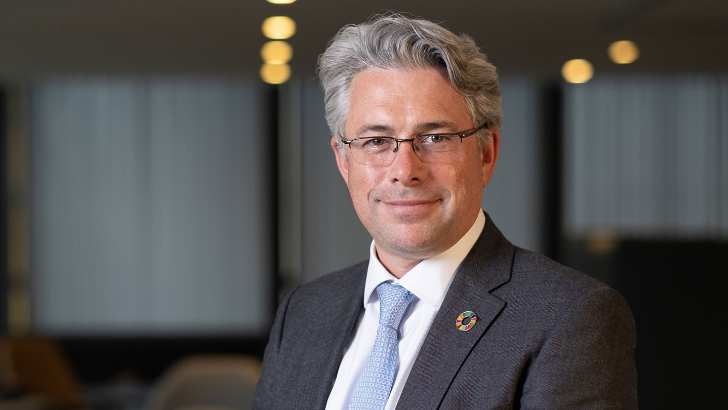Attendees at Aviva Investors’ annual institutional investor conference gave their take on some of the key themes impacting pensions schemes, from ESG to asset allocation shifts.
3 minute read

The results from a series of informal polls conducted at Aviva Investors’ recent UK institutional investor conference, 'Adapting to thrive – inspiring future outcomes’, highlighted several trends extending to the broader pensions industry.
Mirroring policymakers, including the Department for Work and Pensions (DWP), attendees recognised that environmental, social and governance (ESG) considerations materially contribute to risk-adjusted returns. The adoption of behavioural finance, however, received mixed results, with nearly half of the respondents seeing it more as a buzzword than a concept to apply to their investment process.
Defined benefit pension schemes are maturing, and most respondents indicated they were currently targeting self-sufficiency over a buy-out as their ultimate objective. In defined contribution, concerns revolved around the need for a smoother connection between the accumulation and decumulation phases for members. ESG and the use of real assets in investment strategies also featured. In total, around 50 pension fund executives, trustees and consultants who collectively are responsible for £360 billion in assets participated in the polls.
ESG duties

Nearly 40 per cent of the attendees see risk mitigation as the main benefit of ESG integration, while about a third saw enhanced investment performance as its main benefit. Steve Waygood, chief responsible investment officer at Aviva Investors, couldn’t agree more. For him, “it is all about enhancing investment returns, by managing risk”.
This is in line with recent conclusions from the DWP, which issued new guidance in September to clarify and strengthen trustees’ duties in considering ESG risks in the investment process. Globally, the International Organisation of Securities Commissions is considering how securities regulators can encourage sustainable investments, while the Financial Stability Board is working on improving corporate disclosures of climate-related financial information to support ESG integration.
Regulators have an interest in ensuring the financial services system can withstand all forms of risk, including ESG. But they’re also responding to increasing investor pressure, demanding that sustainability be better integrated into investments. According to Waygood, responsible investing is about shaping the future that pension scheme members really want to retire into.
Beyond the behavioural buzzword

Behavioural finance is the latest buzzword and has little impact on schemes’ investment process, according to 44 per cent of the attendees. This result may be surprising to some, given the steady rise to prominence of behavioural science in the past decade, according to Greg Davies, head of behavioural science at Oxford Risk.
In a separate question, however, 67 per cent of the audience agreed that that they are “already consciously applying behavioural finance in practice”. Taken together, these two figures imply some schemes that are applying behavioural finance may not be doing so effectively. This is not surprising: human behaviour is complex, and applying behavioural finance effectively is not simply a matter of running through long lists of biases.
So how can behavioural science move beyond the confines of a buzzword and be a key part of the decision-making process? It is worth recognising that most people essentially face a trade-off between the right thing to do and the comfortable thing to do, Davies said. Investors possess powerful mechanisms geared towards what makes them emotionally comfortable, leading to the tendency to see things through a biased, narrow lens, and potentially bad decisions. Davies argued using a combination of data science, technology and behavioural design can lead to better decisions.
End game

Two-thirds of the attendees said their defined benefit (DB) schemes’ ultimate objective is self-sufficiency. The definition varies among schemes but generally involves a modest premium over the cost of funding liabilities with low risk assets such as government bonds. Under self-sufficiency, the pension liabilities remain on the sponsor’s balance sheet, but the pension scheme’s reliance on the sponsor is greatly reduced. A sixth of the respondents are going a step further and targeting buy-out, which removes defined benefit pension liabilities from the company balance sheet altogether. Another 16 per cent haven’t decided what their schemes’ ultimate objectives are, while three per cent chose pension consolidation.
The poll results are skewed towards self-sufficiency, which isn’t fully reflective of the broader pension industry, according to Boris Mikhailov, investment strategist at Aviva Investors. In Mercer’s 2018 European Asset Allocation Survey, for example, only 38 per cent of UK DB schemes are targeting self-sufficiency. The difference may be due to the Mercer survey covering a much larger sample across different size schemes. In contrast, those who attended Aviva Investors’ conference tended to be larger schemes with in-house resources to cater for targeting self-sufficiency. Another reason is that some of the schemes in attendance may simply be too big to do a full buy-out, which has higher expected costs than targeting self-sufficiency, Mikhailov added.
DB for DC

Defined contribution (DC) pension schemes are growing faster than DB, and improving outcomes for members is a key priority for sponsors. Among the participants at the conference, 41 per cent said the biggest change to DC investments over the next three years will be a single accumulation and decumulation solution.
The poll results highlighted a need for an investment platform that spans the whole lifetime of DC savers, said John Dewey, head of investment solutions at Aviva Investors. Traditionally, DC members would build their pension pot in the accumulation phase, then separately go through a decumulation stage in which they decide how to take the benefits, typically including an annuity purchase. A platform that can connect the two may bring about more benefits, particularly if this process can integrate each member’s unique needs and apply them to the right investment strategy to deliver outcomes.
To further extract efficiency, key themes that are prevalent in DB pensions also can be applied to DC. Conference attendees highlighted two ways to do this: default investment options reflecting investor ESG preferences and improving returns and diversification through allocations to real assets each received 28 per cent of the vote. In the later stages, for example, assets such as private credit may help to deliver predictable income in the decumulation phase in DB, just as they do for mature DB schemes. Best practices in DB can be used with similar positive effects within DC.

















